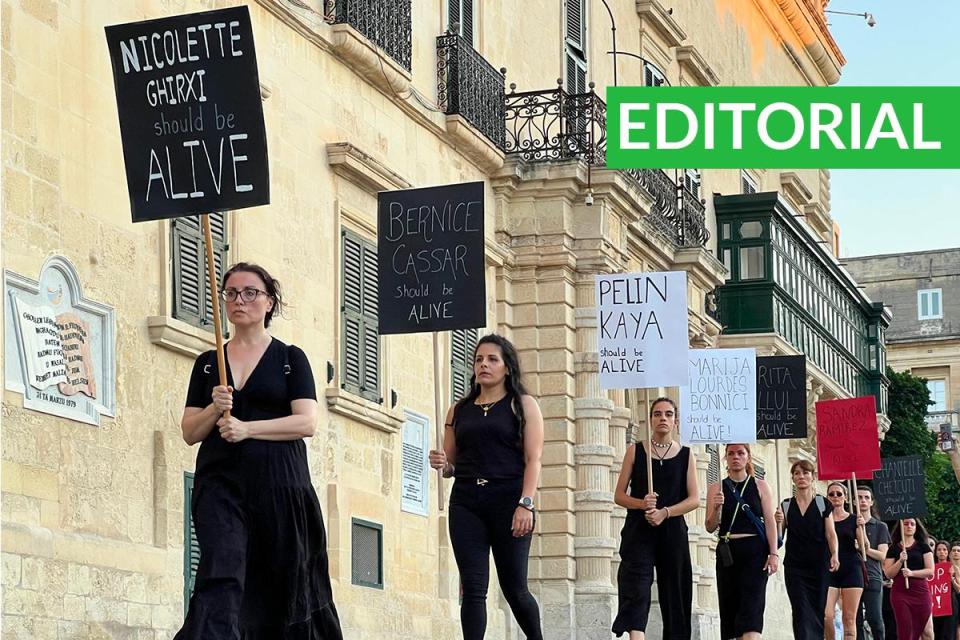Editorial: The system’s fatal consequences
Experts are advising that risk assessment should be made obligatory for domestic violence victims. The authorities should seriously consider this

Nicolette Ghirxi did not think her life was at risk when she filed a harassment report against her ex-boyfriend Edward Johnston in April.
She signed a declaration stating she did not undergo a risk assessment because she did not feel at risk at that moment in time.
Four months later he stabbed her to death in her own home. Before that, he slandered her through social media posts published under fake online profiles.
Nicolette reported the harassment to the police, but they said they could not do much because Johnston was abroad. Four days before she was killed, she informed the police he was in Malta.
Women’s rights experts pointed out the fact that she informed the police meant she felt some form of risk.
The filing of the first, then second and third harassment reports – in April and May – also suggested this. The experts noted that domestic violence victims might not understand the risk they are in – but professionals should. They suggested making risk assessment obligatory. But this has, so far, been shot down.
The Foundation for Social Welfare Services and the police are arguing that undergoing a risk assessment is voluntary, and a victim cannot be forced to agree to one.
Only a few refuse the risk assessment – either because they would have carried one out already and they just want to file a report as a warning to the perpetrator, or do not feel at risk.
We now have a situation where one of the ‘minority’ who refused the assessment – because she did not feel at risk – is dead.
Something is clearly wrong. Which explains why Ghirxi’s family want an independent inquiry.
But, until then, why resist recommendations of experts who work with vulnerable women – to make the assessment compulsory?
Let’s just remember that the overhaul in the way domestic violence is handled – including the change of the risk assessment tool – came about because of the femicide of Bernice Cassar in 2022. An independent inquiry had found that the system failed Cassar.
The bulk of the recommendations made in the inquiry had been made a year before her murder: When she was shot dead by her ex-husband on her way to work, a €20,000 government-funded study into domestic violence had been gathering dust for a year.
The unpublished study pointed out holes in the system and listed recommendations that included re-evaluating the risk assessment method and exploring the use of electronic tagging of alleged perpetrators.
Just last Sunday, Prime Minister Robert Abela said the government will start providing electronic tags and panic alarms for victims of domestic violence. He also announced that a second domestic violence centre will be open next year. This is all good. It is important that victims can access reporting. According to police figures, in the first seven months of the year, the Domestic Violence Unit received 1,264 reports. The unit received 1,979 reports in 2023 and 1,753 in 2022.
The police also saw a spike in harassment reports following the murder of Ghirxi. We had seen this pattern before – when a spike in reports followed the femicide of Cassar.
The cases of Cassar and Ghirxi were very different. Cassar felt at risk. Ghirxi did not.
But the outcome was the same.
Cassar’s death led to legal and procedural changes. Now the murder of Ghirxi may have uncovered another hole in the system. Experts are asking the authorities to plug that hole. This is not done by getting victims to sign declarations; but by helping them understand the risk they are in.